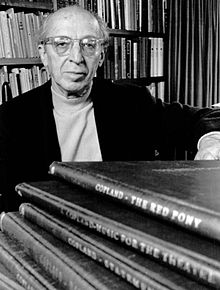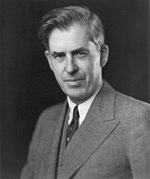
Keith Noel Emerson was an English keyboardist, songwriter, composer and record producer. He played keyboards in a number of bands before finding his first commercial success with the Nice in the late 1960s. He became internationally famous for his work with the Nice, which included writing rock arrangements of classical music. After leaving the Nice in 1970, he was a founding member of Emerson, Lake & Palmer (ELP), one of the early progressive rock supergroups.

The Best of Emerson, Lake & Palmer is an album by British progressive rock band Emerson, Lake & Palmer, released in 1994. This supersedes a 1980 compilation with a shorter, different track list and Japanese ukiyo-e cover designed by Richard Evans.

Works Volume 1 is the fifth studio album by English progressive rock band Emerson, Lake & Palmer, released as a double album in March 1977 on Atlantic Records. Following their world tour supporting Brain Salad Surgery (1973), the group took an extended break before they reconvened in 1976 to record a new album. They were now tax exiles and recorded new material in London and overseas in Montreux, Switzerland and Paris, France. Works Volume 1 features a side dedicated for each member to write and arrange their own tracks, while the fourth side features songs performed collectively. Keith Emerson recorded his Piano Concerto No. 1, Greg Lake wrote several songs with lyricist Peter Sinfield, and Carl Palmer recorded tracks of varied musical styles.
A fanfare is a short musical flourish which is typically played by trumpets, French horns or other brass instruments, often accompanied by percussion. It is a "brief improvised introduction to an instrumental performance". A fanfare has also been defined in The Golden Encyclopedia of Music as "a musical announcement played on brass instruments before the arrival of an important person", such as heralding the entrance of a monarch. Historically, fanfares were usually played by trumpet players, as the trumpet was associated with royalty. Bugles are also mentioned. The melody notes of a fanfare are often based around the major triad, often using "[h]eroic dotted rhythms".
Symphony No. 3 was Aaron Copland's final symphony. It was written between 1944 and 1946, and its first performance took place on October 18, 1946 with the Boston Symphony Orchestra performing under Serge Koussevitzky. If the early Dance Symphony is included in the count, it is actually Copland's fourth symphony.

Also sprach Zarathustra, Op. 30 is a tone poem by Richard Strauss, composed in 1896 and inspired by Friedrich Nietzsche's philosophical 1883–1885 novel Thus Spoke Zarathustra. Strauss conducted its first performance on 27 November 1896 in Frankfurt. A typical performance lasts roughly thirty-three minutes.
A London Symphony is the second symphony that Ralph Vaughan Williams composed. The work is sometimes referred to as Symphony No. 2, though the composer did not designate that name for the work. First performed in 1914, the original score of this four-movement symphony was lost and subsequently reconstructed. Vaughan Williams continued revisions of the work into its final definitive form, which was published in 1936.

Sir Eugene Aynsley Goossens was an English conductor and composer.
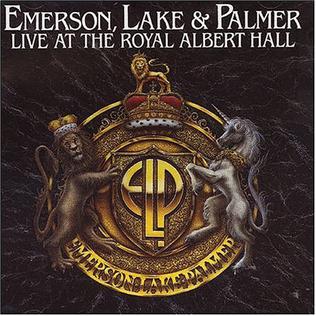
Live at the Royal Albert Hall is a live album by Emerson, Lake & Palmer. It was recorded at two concerts at the Royal Albert Hall during the Black Moon tour in early October 1992.
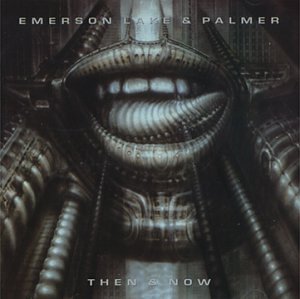
Then and Now is a live album by British progressive rock band Emerson, Lake & Palmer, released in 1998.

The Sinfonietta from 1926 is a late work for large orchestra by the Czech composer Leoš Janáček. It is dedicated "To the Czechoslovak Army" and Janáček said it was intended to express "contemporary free man, his spiritual beauty and joy, his strength, courage and determination to fight for victory". It started by Janáček listening to a brass band, becoming inspired to write some fanfares of his own. When the organisers of the Sokol Gymnastic Festival approached him for a commission, he developed the material into the Sinfonietta. He later dropped the word military. The first performance was in Prague on 26 June 1926 under Václav Talich.

Live in Poland is a live album by the progressive rock group Emerson, Lake & Palmer. It features a performance in Katowice, Poland, during June 1997. The performance was originally released exclusively in Poland in 1997, with a different cover, by Polish music company Metal Mind Productions. It would be released internationally for the first time at Austria in 2001, and for the rest of the world during April 2003.
Fanfares for the Uncommon Woman is a series of six short compositions, or “parts” of one 25-minute composition, by Joan Tower. Parts I and II are scored for brass and percussion, parts III and V are scored for brass ensembles, and Parts IV and VI for full orchestra. Tower wrote Parts I-V between 1987 and 1993, and Part VI twenty-one years later, in 2014. The fanfares are a tribute to "women who take risks and are adventurous", with each dedicated to an inspiring woman in music.
Rodeo is a ballet composed by Aaron Copland and choreographed by Agnes de Mille, which premiered in 1942. Subtitled "The Courting at Burnt Ranch", the ballet consists of five sections: "Buckaroo Holiday", "Corral Nocturne", "Ranch House Party", "Saturday Night Waltz", and "Hoe-Down". The symphonic version omits "Ranch House Party", leaving the other sections relatively intact.
Quiet City is a composition for trumpet, cor anglais or oboe, and string orchestra by Aaron Copland. In the published score, the composer indicates "use Oboe only if no English Horn is available."
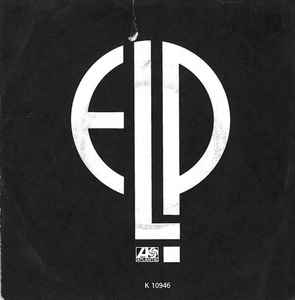
"Fanfare for the Common Man" is an instrumental piece of music adapted and played by the English progressive rock band Emerson, Lake & Palmer, from the group's 1977 Works Volume I album. Adapted by Keith Emerson from Aaron Copland's 1942 piece of the same name, it is one of their most popular and enduring pieces.
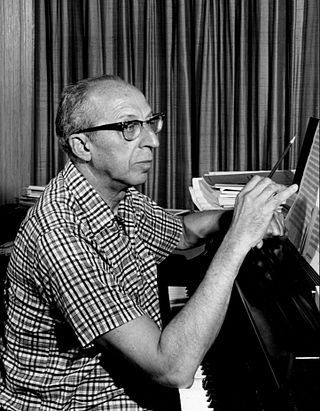
Danzón cubano is a composition for two pianos by American composer Aaron Copland. The piece, written in 1942, was inspired by the Cuban genre of the same name. It was first arranged for orchestra in 1946.
The Concerto for Piano and Orchestra is a musical composition by the American composer Aaron Copland. The work was commissioned by the conductor Serge Koussevitzky who was then music director of the Boston Symphony Orchestra. It was first performed on January 28, 1927, by the Boston Symphony Orchestra conducted by Koussevitzky with the composer himself as the soloist. The piece is dedicated to Copland's patron Alma Morgenthau Wertheim.
The Short Symphony, or Symphony No. 2, is a symphony written by the American composer Aaron Copland from 1931 to 1933. The name derives from the symphony's short length of only 15 minutes. The work is dedicated to Copland's friend, the Mexican composer and conductor Carlos Chávez. The symphony's first movement is in sonata-allegro form, and its slow second movement follows an adapted ternary form. The third movement resembles the sonata-allegro but has indications of cyclic form. The composition contains complex rhythms and polyharmonies, and it incorporates the composer's emerging interest in serialism as well as influences from Mexican music and German cinema. The symphony includes scoring for a heckelphone and a piano while omitting trombones and a percussion section. Copland later arranged the symphony as a sextet.
